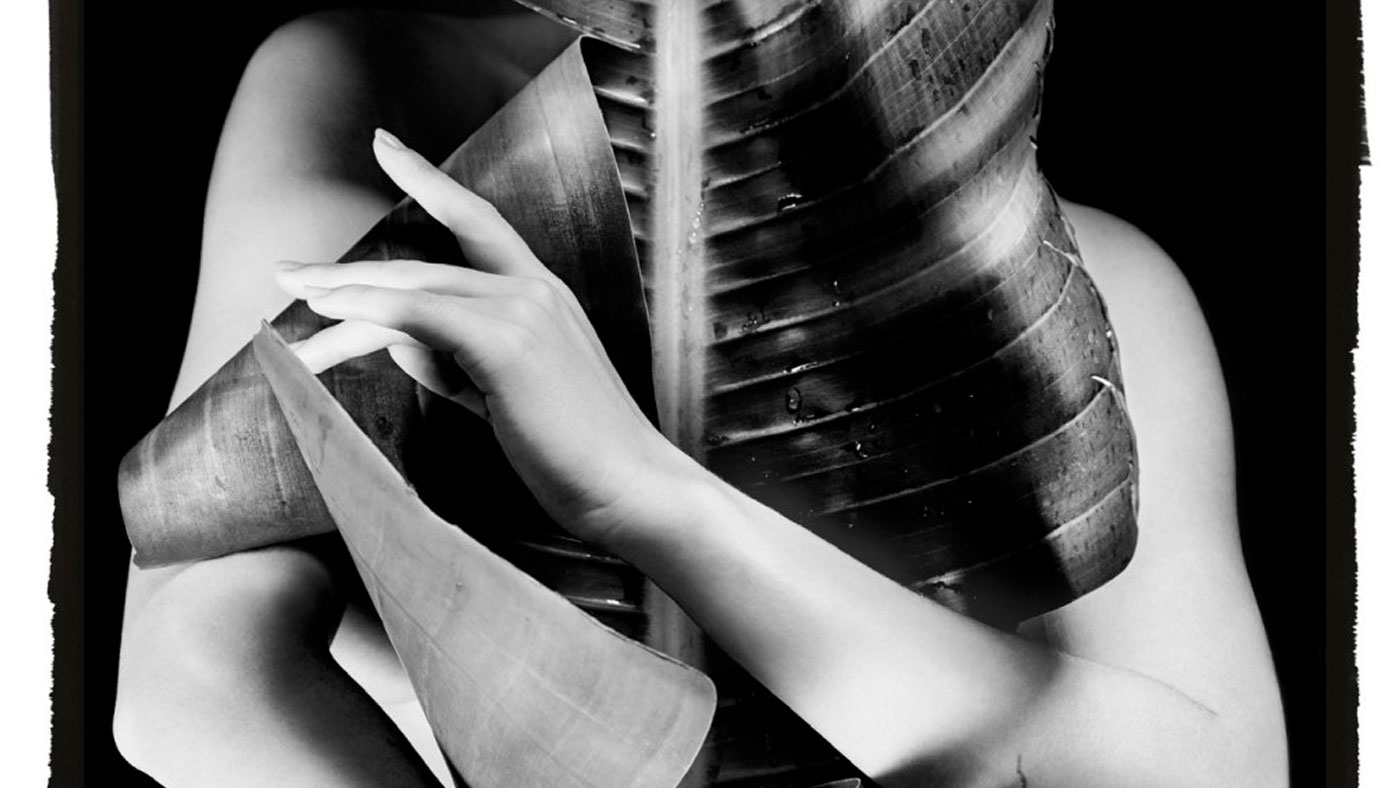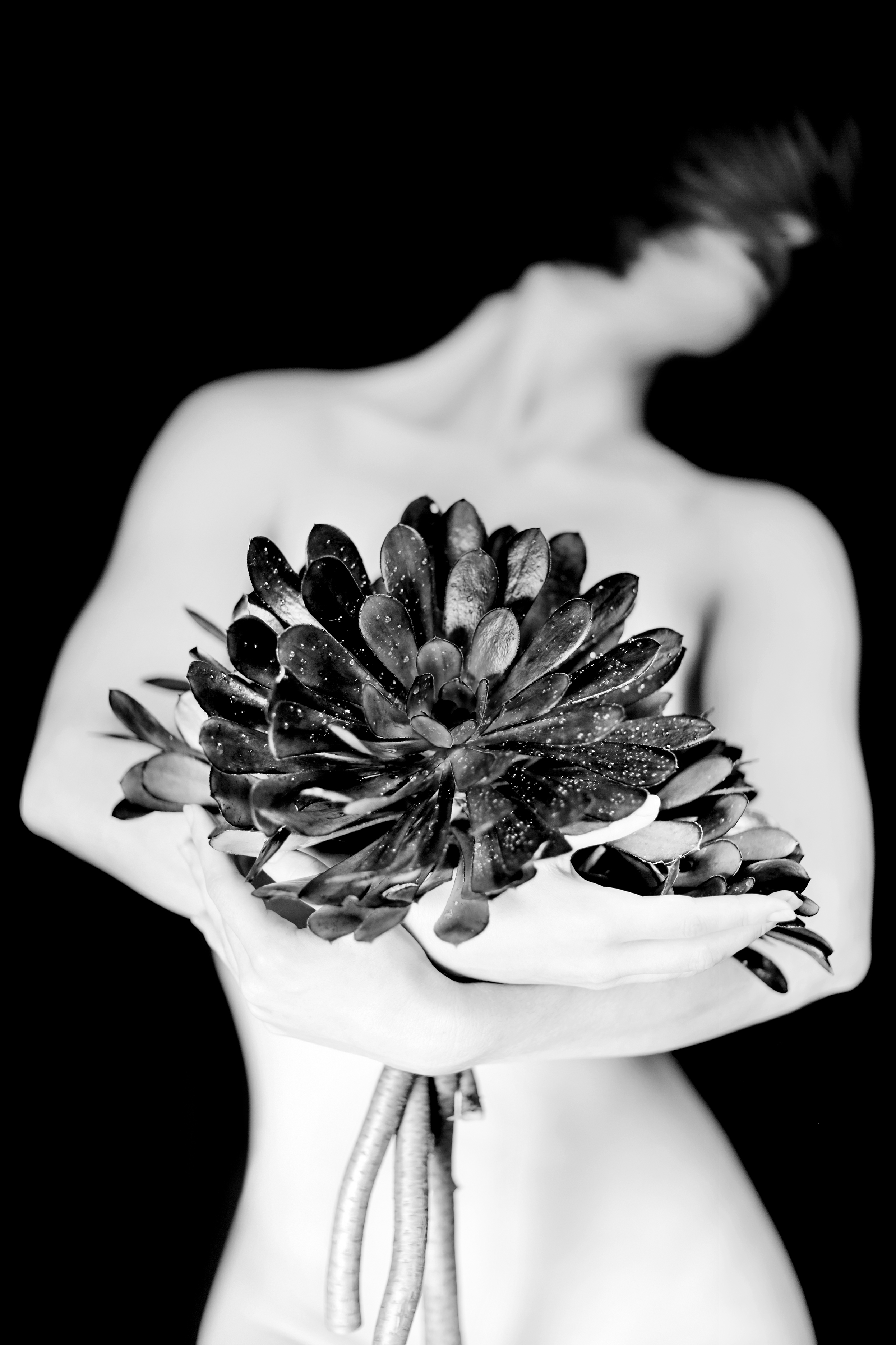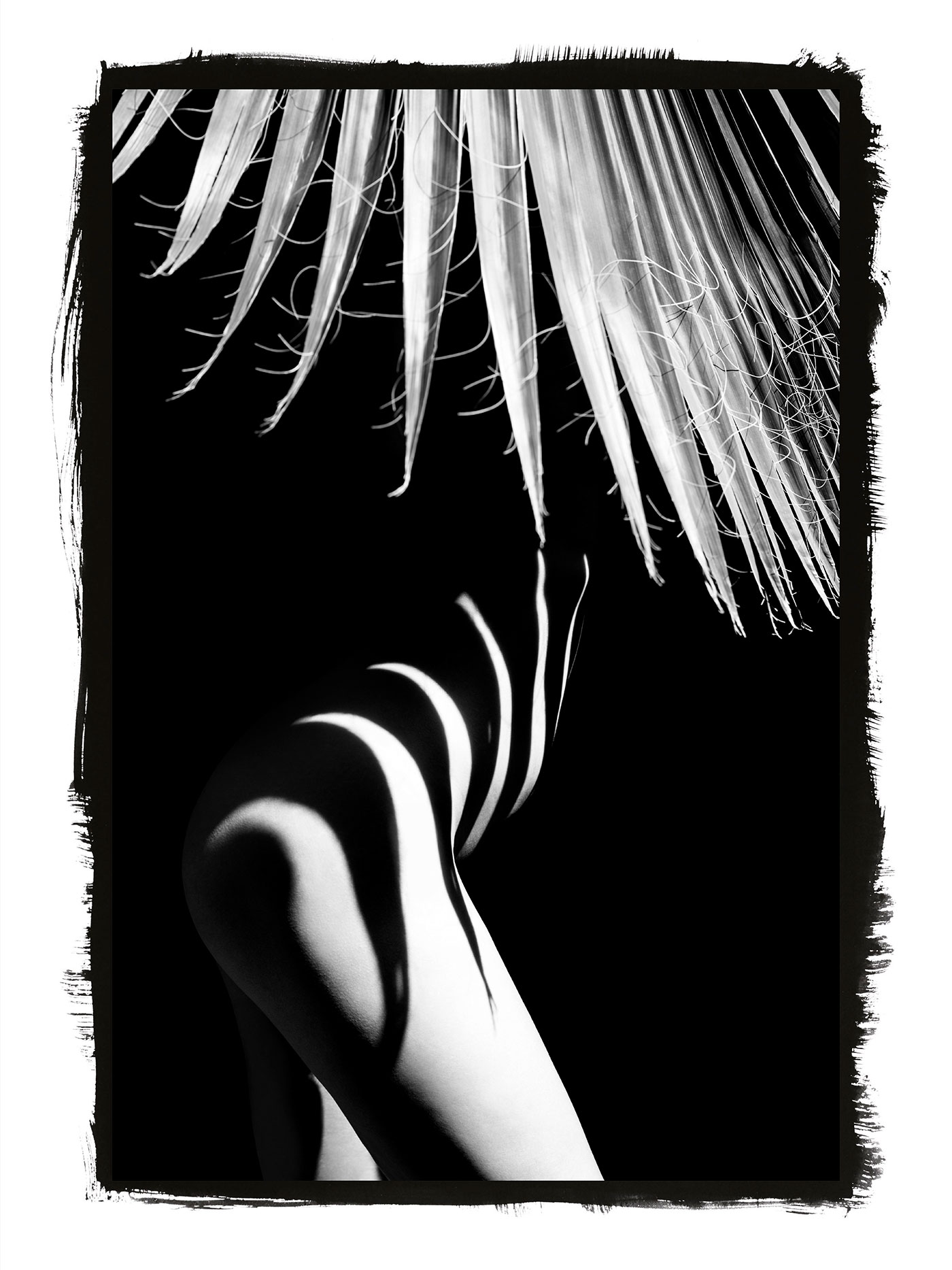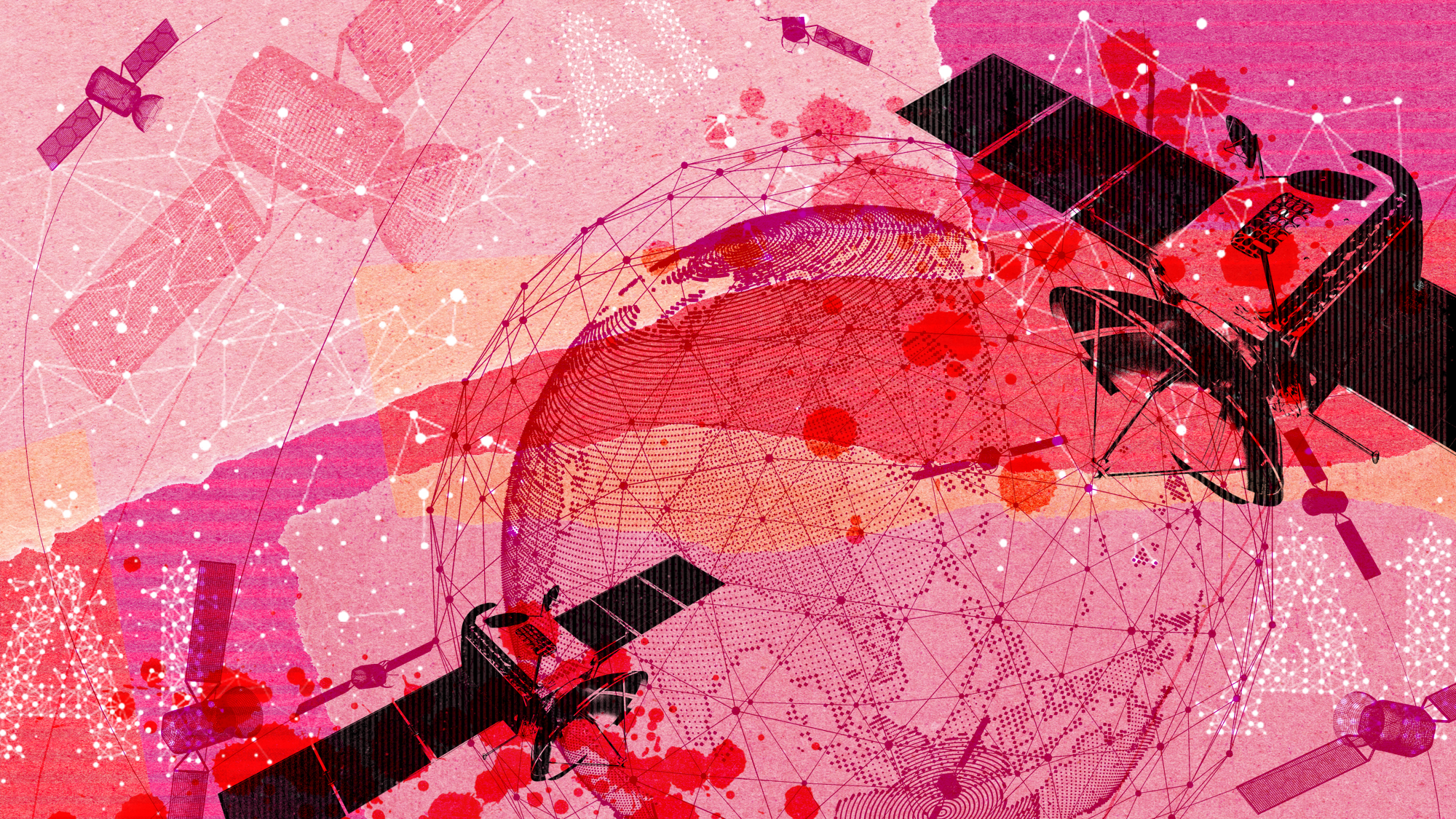Maryam Eisler: the Iranian photographer rekindles the power of Tina Modotti
New series peels back the layers of a love story charged with emotion and political idealism

“Art wins where politics often fails." So said Maryam Eisler in a previous interview, and certainly the Iranian-born photographer who is based in London has always sought out beautiful, spartan landscapes, as well as curvilinear architecture, as a means of expressing her own form of soulful purity.
Her female nudes are often cast against dramatic environments (the rugged cliffs of New Mexico, the windswept lavender field of Provence; the lush landscape of the Catskill Region) that betoken a sense of grandeur and primordial force that in turn point to a bold, uncompromising femininity and free-thinking sense of 'wholeness'.
Eisler, a highly regarded patron of the arts - she is a trustee of London's Whitechapel Gallery, co-chair of Tate's MENAAC (Middle East North African Acquisitions Committee), and is a member of Tate's International Council - has now turned her lens to history in an unconventional way that encourages the viewer to peel back the layers of a love story that was charged with emotion and political idealism.
The Week
Escape your echo chamber. Get the facts behind the news, plus analysis from multiple perspectives.

Sign up for The Week's Free Newsletters
From our morning news briefing to a weekly Good News Newsletter, get the best of The Week delivered directly to your inbox.
From our morning news briefing to a weekly Good News Newsletter, get the best of The Week delivered directly to your inbox.

The series, called Imagining Tina explores the relationship between the great 20th century American photographer Edward Weston and fellow photographer, muse, communist and activist Tina Modotti. Eisler sets up a narrative within a narrative by presenting her lens as Weston's gaze, admiring his lover in poses that are both sensual and sculptural. As such, Eisler's striking monochromatic photographs borrow from Weston's sharply focused style and chiaroscuro effects, and yet possess an intriguing 'newness' that is hard to place but rooted in art history. A longtime admirer of Man Ray, Eisler's own style (seen here within Weston's style so to speak) draws inspiration from the stark and unexpected effects of his rayographs, as well as compositions authored by Bill Brandt and Lucien Clergue, both considered masters of contrast and light manipulation.
In this series though, Eisler's female lead, in this case 'Tina', is not so much identified by her landscape, but representative of a smooth and erotic territory mapped by the curves and shadows of her own body. Eisler's images are emotionally transportive in their own right – that is to say that there's no real need to explore the backstory, but I'd encourage everyone to delve a little deeper into the relationship between Weston and Modotti as well as their respective careers; especially since Modotti's talent as a photographer and influencer on Weston's style (including his obsessive technical precision) has been underplayed until recently.
Eisler's series is 'set' during the couple's 'Mexico years' (1921-1926), a time of great political change in the country and one which ultimately steered Modotti away from the lens and full-heartedly towards communism. Theirs is a love story that undoubtedly caused much pain (Weston left his wife and children for Modotti) but this albeit brief but passionate relationship is irrefutably defined by an intense creative output that shaped their individual beliefs and methods of expression, be they artistically or politically motivated.
I spoke to Maryam Eisler about her new exhibition and how she came to shoot this series on Wildcat Hill in Carmel, where Edward Weston lived from 1938 until his death in 1958.
A free daily email with the biggest news stories of the day – and the best features from TheWeek.com
Do you think visitors to your show should know about the story that inspired your work?
The exhibition needs to stand on its on its feet without explanation I think. I've seen 450 artist studios in the last five years because of publications and exhibitions I've been involved with [Maryam has published six books with Thames and Hudson including one centred on the creative denizens, past and present, of London's East End]. I like to view work without too much information; to see what it represents on an emotional level is such an important thing. If an art work engenders some form of emotion, be it good or bad, if it punches you in the stomach, so to speak, then the artist has achieved something. If you step away from the hustle and bustle of Tottenham Court Road and you find some peace in this gallery looking at my work, then that makes me happy. You only really need to know the rest if you are genuinely interested. That is the way I make art.

You have invariably chosen to depict the female form in your work…
I've always been attracted to what I call the 'sublime feminine' and its relationship with nature. In the past I have placed the female figure in 'big' nature: The Santa Fe desert, the fields and stone quarries of Provence. I recently shot a series in Iceland called 'O' for origin, in an desolate and almost primal setting. But with this series, I have brought nature in as opposed to exploring the concept of 'woman lost in nature'. The series was shot at Edward Weston's home in Carmel, California, and the idea was for woman to 'hold' nature. In some shots I used plants and flowers found on the estate to create this effect, in other pieces, the figures become the landscape. A kind of body architecture if you like.
Your pictures play with light and contrast, so much so that bodies look ineffably still and sculptural. Having said this, you do favour 'body beautiful' female nudes. Is perfection important to you when it comes to the female form?
I'm really interested in philosophical concepts surrounding the image of the female figure, so for me, the art is not so much rooted in physical appearance, even though the models do have beautiful bodies. A lot of my images are quite minimalist, so it's really about stripping the figure down to its bare essence, so as to represent the body's beauty not only in its physical form but in its soulful and absolute form. From a visual perspective, I like to paint with light and I never use artificial lighting. If you speak of classic aesthetics, my images potentially have a '30s/'40s feel to them, and I'm very attracted to those decades. There were certain ideals held in those times which we have lost. We have lost a sense of sentimentality and grandness which I am aiming to recapture. I am also interested in the geometry of the figure itself, its curves either in contrast or in collaboration with a setting or landscape. So the beauty aspect is not my personal focus. I just chose [these nudes] because the lines are so clean and that, the architecture of the body, Is of great interest to me.
Your shoot locations are often barren and otherworldly, either great sweeping expanses of desert or full of lush and wild vegetation. Why are you attracted to such extreme environments?
If you asked me what is the number one factor that leads my work, or indeed leads me as a human in day-to-day life, it's light. I always pick locations that have interesting light, be it the Mexican desert, the mountains of the Catskills or the wild floral fields of Provence. There's also the question of heightened emotion when you shoot in such places.
Do you mean that you have to be in a certain frame of mind in order to pursue a project?
I have always been attracted to areas that are associated with this sense of heightened emotion. Political heightened emotion especially. I am a child of revolution, although I didn't live through it [in Iran] because we left the country before the uprising, I still lived through the trauma of change and all the heightened emotion that went alongside that. As a child, I didn't know, or rather I thought I didn't know, but now, looking back, it's shocking to think about what we went through. On many levels it brought us together as a family unit. It's something that has shaped my creative output for sure. I produced a series on Havana in Cuba, which I called 'Beauty and Dereliction' because I've always been attracted to the positives and negatives of revolution. But really, it’s the stories of inner emotions that interest me the most. To bring us back to this particular exhibition, I was reading Edward Weston's journals and was particularly taken with those written during his years in Mexico spent with Tina Modotti, whom he met in the early '20s in LA. He was married but following their affair she convinced him to move to Mexico which was in the wake of revolution. As you are reading these journals, you cannot help but be touched by that force and emotion of revolutionary fervour that was going on whilst they were there. You could particularly feel it because they hung out with very intellectual and bohemian people like Diego Rivera, Frida Kahlo and the poet Pablo Neruda. It was a time of extreme emotional power. And something that has not been discussed enough was that [Modotti] was always seen in the shadow of Edward Weston, but in their five years together he was enthralled by her power, and she truly influenced him because she was a talented photographer in her own right. Between 1921 and 1930, her photographic output was really prolific and avant garde. It's true to say that all [Weston's] nature morte, including his famous 'Pepper No. 30', was influenced by Modotti. After 1930, she completely relinquished her creative endeavours and became a political activist, immersing herself in communism. Eventually she was deported from Mexico, only to return in 1939 under a pseudonym. She died under very suspicious circumstances and it's even been suggested that she was murdered.
Tell me about Wildcat Hill where this series was shot…
Well, we are talking about four generations of unbelievable photographers - Edward, his son Cole, his grandson Kim Weston, and his great-grandson Zach – who really are one of the most influential and creative families in American photographic history. When I was living with them [Kim, his wife Gina and their son Zach], I was truly living history. Spending time in Edward Weston's original darkroom, reading his journals and notes and formulations; seeing the desk and lamp that feature in a lot of his photographs…It's astounding to think they live in a museum! While I was there I noticed some terracotta candlestick holders on top of the mantelpiece and also these earthenware dishes with beautiful designs on them, and I felt compelled to ask about them. Being in California and so near Mexico, I thought they may have been simple souvenirs picked up from a trip there. Kim casually told me that Edward had brought them back himself following his break up with Tina. And in many ways, [Modotti] has always been part of their lives all these years and continues to be so today. [At the exhibition in Fitzroy Square], there are two Weston pieces on loan from a private collector: 'Pepper No.30' and 'Nude on Sand'. It is great to have this continued dialogue here in London.
You've chosen to represent Tina through Edward's lens but having shot the images, you too have a voice in this artistic narrative. Do you think you've given Tina something of your own soul too?
I think I have tried to idealise Tina, because I feel that in a sense she didn't have a voice until very recently. From my perspective it's a sensual approach as opposed to a sexual one. I wanted to show the intensity of their shared emotion rather than the physical pull of their coupling. I also wanted to emphasise that the level of intimacy that they may have had above and beyond the physical. To show an ideal therefore was my desire, the representation of a powerful beauty is, I hope, what I have achieved. She really was an incredibly powerful human being. A contentious character to some but then powerful figures often are. Having read about her, I don' think she set out to be a marriage breaker. She simply fought with emotion instead of her head. This lead her down this path of self-destruction because she gave herself away to political emotion in the end.
Your images have a distinctively calm and peaceful quality. Tell me about how you like to work?
Day to day, I'm primarily a mother. My two children, 14 and 17, are at very important times in their lives, so family life is very special. Two or three times a year I take five days out for myself. I call it my 'disappearing act'! I explore places that then become sanctuaries, places where I can indulge in true personal reflection. It’s such a luxury, because you're cleansed of all obligations and you can just produce. Perhaps it is this sense of peace that translates into my work. Because my life has been accentuated by so much turmoil, personally speaking, I think there's an element of me trying to seek out a place of calm.
It should be noted that your photographs also have a painterly edge thanks to master platinum printer Martin Axon who printed many of Mapplethorpe's platinum prints. How did this collaboration come about?
Because tradition plays a great part in my work, I thought it be great to look at traditional printing methods as well. When I shot at the house in Carmel, Kim kindly introduced me to the process of platinum printing, which I loved. The density of colour, the surface, the feel of the image are elements that are accentuated thanks to this method; [the image] is much more concentrated on many levels and you can create many more contrasts. When I came back to London, I couldn't find a printer who could help me, because it's something of a lost art. I was talking to Carrie Scott who is the curator for [fashion photographer] Nick Knight and she suggested Martin Axon. Martin, I soon found out, is a larger than life character. He's British by birth and in his mid-seventies now. He moved to the States in 1981 and now lives in Connecticut. The story is that he needs to like you and like your work because he's collaborated with the best, from Mapplethorpe to Annie Leibovitz to Patrick Demarchelier and Horst P. Horst. I didn't think me reaching out would lead to anything but when we met, we hit it off as humans. There was a lot of communication over the next two years, because it took a lot for him to understand my thinking, because there are so many variations when it comes to platinum printing. It depends on what emotion and feelings you want to impart. But he really got what I wanted. He's an artist because he paints with the emulsion. He developed the paper too [in the early '90s]. It's from the Arches paper mill in France. It's watercolour paper and 100% cotton fibre; and called 'Arches Platine' paper. Now it is used widely by painters and photographers the world over. It is highly intricate work and he's a true artist. My pieces are editions of five which is very small indeed but as Martin points out, each one is unique because they all have their own special edge.
Read more about the artist at maryameisler.com. The exhibition 'Imagining Tina: A Dialogue With Edward Weston' runs until March 2nd. Visit tristanhoaregallery.co.uk
-
 A peek inside Europe’s luxury new sleeper bus
A peek inside Europe’s luxury new sleeper busThe Week Recommends Overnight service with stops across Switzerland and the Netherlands promises a comfortable no-fly adventure
-
 Space data centers could be joining the orbit
Space data centers could be joining the orbitUnder the radar The AI revolution is going cosmic
-
 Codeword: December 23, 2025
Codeword: December 23, 2025The daily codeword puzzle from The Week